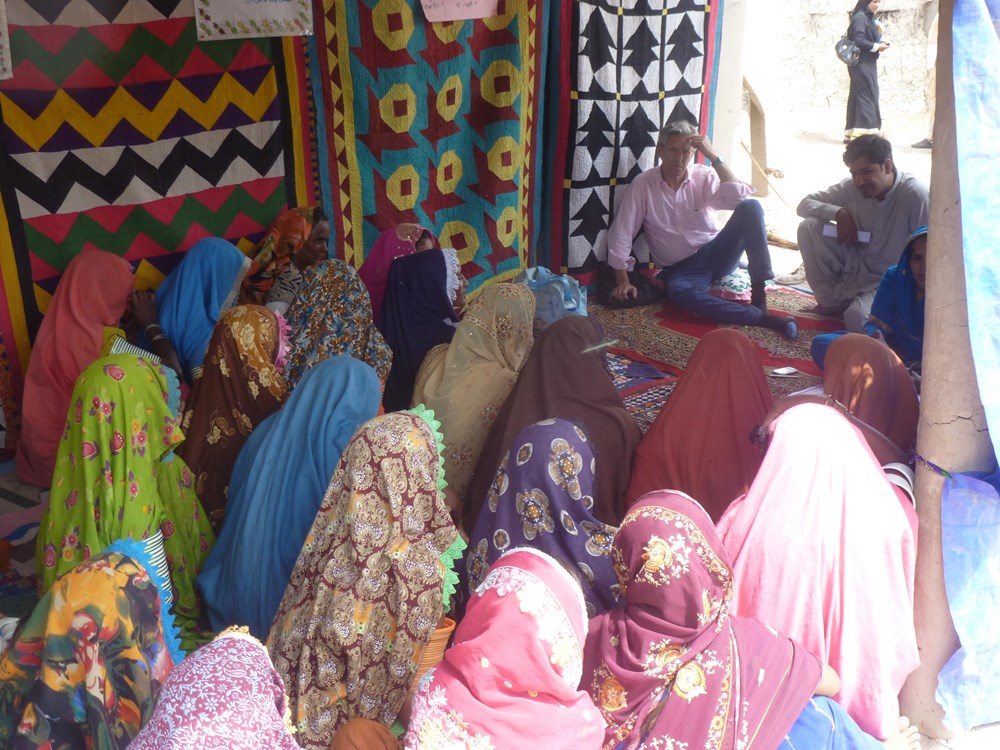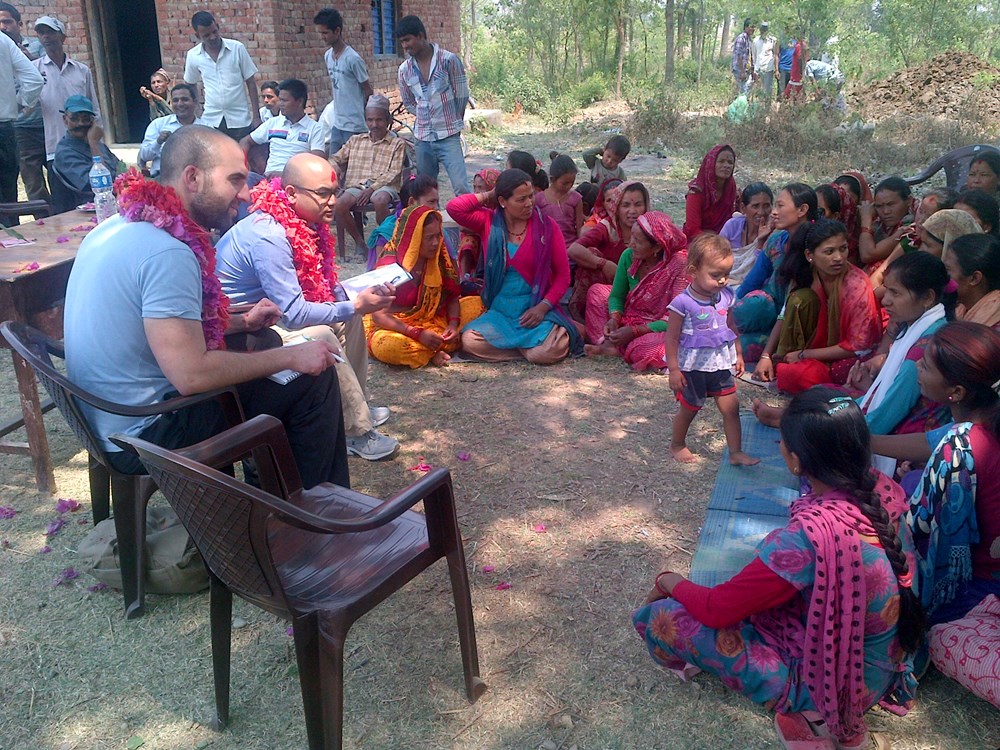There is a simple and clear notion that if you listen to your constituents, you will be able to identify which of their needs require attention and become better at attending to them. We say this is ‘simple and clear’ because for many years it has been a widely accepted premise, forming the basis of the customer satisfaction industry. Of course we have all had frustrating experiences answering inconvenient surveys, but now almost every company wants to know what you think and, more importantly, the good ones respond. This process of listening and responding to constituents resonates differently among organizations operating in the social change sector.
For some time now the topic has been generating lots of excitement. Some of you may be imagining something along the lines of ‘your call is very important to us, and one of our beneficiary service team will be with you shortly, please hold’, but systematically listening to constituents is actually a little more sophisticated.
Of course, things are never straightforward, and setting up effective feedback loops is easier said than done. However, there are indications that more and more organizations are accepting the basic premise that feedback loops are fundamental to improving how we operate.‘There are indications that more and more organizations are accepting the basic premise that feedback loops are fundamental to improving how we operate.’
So where exactly are we down the long, and potentially winding, road of integrating feedback systematically into our work? Diffusion of Innovations theory would suggest we need a critical mass before wider adoption can kick in. This is a fancy way to describe something we all see around us. Take mobile phones, for example: innovators led the way, getting the early brick-sized phones before anyone else. They were soon followed by early adopters, who similarly saw the potential of mobile phones. By the time the early majority came on board, mobile phones had spread widely, their benefits generally understood and accepted. Of course there are laggards, the last to adopt the technology, instead carrying spare change to use one of the few phone boxes left unvandalized.
Here we will try to identify the innovators, the early adopters and also, we are afraid, the laggards in listening to constituents. If mobile phones have come such a long way that you can now buy a mobile phone for a dog (yes, it is true!), where are we on feedback loops?

Nick van Praag of Keystone’s Ground Truth project meets with locals of Pakistan’s Sindh Province in 2013 to see if they’re satisfied with efforts to help them recover from floods.
The innovators
There has been a proliferation of new ideas and approaches to feedback loops in the last five years or so. There have been deep-dive approaches that focus on qualitative dialogue like the CDA Listening Project and light-touch, real-time feedback systems that address the need for actionable metrics, such as Constituent Voice. These wide-ranging tools have been tested in a number of different contexts, and are leading the way for others to build on and develop further. This wave of innovation includes organizations from a number of different sectors: NGOs and multilaterals, humanitarian assistance agencies, national social services agencies, and technical and telecommunication companies irrupting in the so-called ‘civic-tech’ space.
‘An effective feedback loop is one that provides useful feedback not only on programmes and services but also on the feedback mechanism itself.’
Innovators are willing to take risks and as a result need support from donors – and a few donors, such as those associated with the Fund for Shared Insight, are encouraging experimentation and field-testing ways to systematically collect and use constituent feedback. Innovators, and the donors that support them, must also be willing to fail. There are many examples of failure in the non-profit sector but far fewer examples of intelligent failure – whereby innovators learn quickly what does and doesn’t work. An effective feedback loop is one that provides useful feedback not only on programmes and services but also on the feedback mechanism itself. The members of Feedback Labs are such innovators, all trying, testing, and yes at times failing, and helping to pave the way for the early adopters.
The early adopters
Clinging to the coat tails of the innovators are a number of major international NGOs and other international and national agencies. Feedback loops are closely linked to the current push for ‘downwards accountability’ in the international development and humanitarian assistance sectors. In the last decade organizations have come under pressure, both internally and externally, to become more accountable, and feedback loops are often portrayed as a tool that can serve this purpose. Lots of organizations talk the talk, and are now beginning, with small baby steps, to walk the walk. Lucy Bernholz included ‘constituent feedback’ as one of her top ten buzzwords in her 2014 Blueprint.
We are now seeing some interesting examples of adoption. The UK’s Department of International Development is testing constituent feedback in a number of pilots and across the Sierra Leone Ebola response. The US-based anti-poverty organization LIFT is managing its performance through systematically collecting feedback from those intended to benefit, using it to foster open dialogue with its primary constituents, leading to mutual understanding and agreed action for improvement.
But establishing effective feedback loops is not a straightforward matter. One sobering example that came to our attention, which is sadly not an exception, is of a major NGO setting up complaint and feedback boxes during the Haiti earthquake response. The boxes were never opened. This highlights the main barrier to effective feedback loops among the early adopters – a big focus on collecting the feedback and too little on actually closing the loop, using it for change and improvement.

Keystone’s Kai Hopkins in Dang, Nepal, collecting data on the perceptions of corruption and the impact of DFID anti-corruption programmes in 2014.
The laggards
But getting organizations to use the data they collect is easier than trying to convince the laggards that feedback loops should be part of their day-to-day work. Do you know anyone without a mobile phone? Perhaps one or two. But when it comes to constituent feedback, there are still many who simply do not see the value of collecting it, let alone using it. And, though we may not like to acknowledge it, there are still isolated pockets where an unpleasant mix of fear, perceived risks, self-interest and arrogance lead people to write off the idea of systematically listening to those who are meant to benefit from our work.
Of course some might object to this, and point to the likes of a recent Center for Effective Philanthropy (CEP) report which claims 61 per cent of non-profits say they use feedback to a ‘great’ or ‘extreme’ extent. But who would admit to being a laggard? That is the issue with reports based on unverified self-reporting. Independent reviews, such as those done by Charity Navigator, the world’s largest charity rating agency, have found that the reality is not quite so rosy.[1]
Nonetheless, in due course even these laggards will adopt and follow suit. If, that is, we encourage the early adopters and support them in overcoming their frustrations. This requires that we develop the infrastructure and tools to make the process easier and provide the right incentives.
Incentives are coming. World Bank chief Jim Kim has committed to 100 per cent beneficiary feedback in World Bank projects where beneficiaries are identifiable. Charity Navigator has added Constituent Voice to its rating system. Perhaps most surprisingly, the US Congress has become the first legislature to require reporting on beneficiary feedback as part of its quid pro quo for humanitarian aid authorization.
Funders need to play their part too. Rarely do funders ask non-profits, ‘What do the people you are trying to help with our funds actually think about what you are doing?’. Participants in the CEP study report that funders rarely provide the resources to find the answer. Nor do funders seem to care whether or not grantees do make changes in response to feedback from the ultimate beneficiaries.‘Returning to our mobile phone example, we are definitely past the stage of a few business executives and kids of Congressmen lugging round a phone the size of a brick, but we are not at the stage where everyone owns an iPhone 6. The reality is we are somewhere in the middle.’
As funders start to ask these questions, along with other developments, we can set our sights firmly on the early majority.
Returning to our mobile phone example, we are definitely past the stage of a few business executives and kids of Congressmen lugging round a phone the size of a brick, but we are not at the stage where everyone owns an iPhone 6. The reality is we are somewhere in the middle. As with our mobile phones, one day we will look back and wonder how we ever survived without feedback loops.
Kai Hopkins and Natalia Kiryttopoulou are both senior consultants at Keystone Accountability. Emails kai@keystoneaccountability.org and natalia@keystoneaccountability.org







Comments (0)